A+ Content: when Amazon inspires all marketplaces
16/05/25
8'
At the origin of e-commerce, product pages were often reduced to their bare minimum: a title, a description, some technical specifications and one or two photos. Then Amazon changed the game. With the introduction of its A+ Content programme, the American giant paved the way for a new way of selling online: more visual, more narrative, more immersive. An approach now adopted and adapted by most major marketplaces.
A+ Content: what exactly are we talking about?
A+ Content is a feature offered to brands selling on Amazon via Vendor Central or Brand Registry. It allows them to replace the classic product description with enriched content: full-width visuals, comparison tables, interactive modules, brand storytelling, focus on product benefits, etc.
The goal? To increase conversion rates by reassuring the customer and enhancing the product and brand value proposition. Amazon even states that A+ Content can increase sales by 3 to 10% on average.
Amazon, pioneer of enriched product content
Initially launched under the name Enhanced Brand Content, this feature was designed to help brands stand out in an increasingly competitive environment. Amazon understood early on that consumers no longer settle for technical descriptions: they want inspiration, concrete demonstrations of product use, and a visual experience close to physical retail.
Available since 2016, A+ Content was one of the first formats of its kind to offer such advanced product page customisation.
This movement started by Amazon has since gained followers. It can legitimately be said that the American marketplace was the precursor of a trend now widespread.
A+ Basic vs A+ Premium: what are the differences?

Mastering A+ Content on Amazon… means you are ready for all marketplaces
Selling effectively on Amazon with A+ Content is a bit like passing an expert level test in e-commerce. Why? Because Amazon is the most demanding marketplace in the market:
- It is the most competitive platform worldwide with hundreds of thousands of sellers in each category.
- It is extremely codified regarding content, images, internal SEO and editorial rules.
- It imposes strict standards on brands for product data quality (texts, visuals, specifications).
- It is also the most visited in Europe: more than 35 million unique monthly visitors in France alone.
Mastering A+ Pages on Amazon therefore means preparing to sell on all other marketplaces.Once the foundations are laid on Amazon – visual storytelling, product differentiation, smooth mobile experience – it becomes easier to replicate this strategy elsewhere, often with less strict standards.
Other marketplaces align… and draw inspiration from Amazon
Over time, other platforms have understood that enriched content means performance: more engagement, fewer product returns, better brand perception. Here is an overview of those who followed Amazon’s lead:
Cdiscount
The French platform offers partner brands enriched product pages with graphic templates. Thanks to its publishing interface, it is possible to:
- Integrate visual banners,
- Add differentiating elements by product category (notably high-tech, household appliances),
- Structure the message via narrative blocks or comparative visuals.
The aim is clear: help brands stand out in a very price and volume-oriented environment.
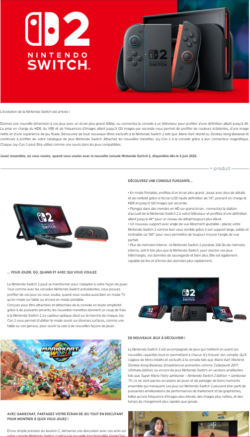
AliExpress
The Chinese giant has long adopted a strong visual logic, especially for its premium sellers. These can:
- Add demonstration videos,
- Create interactive storytelling,
- Display large immersive visuals.
AliExpress’s approach is very focused on the customer’s emotional journey, particularly to attract a young and mobile audience.
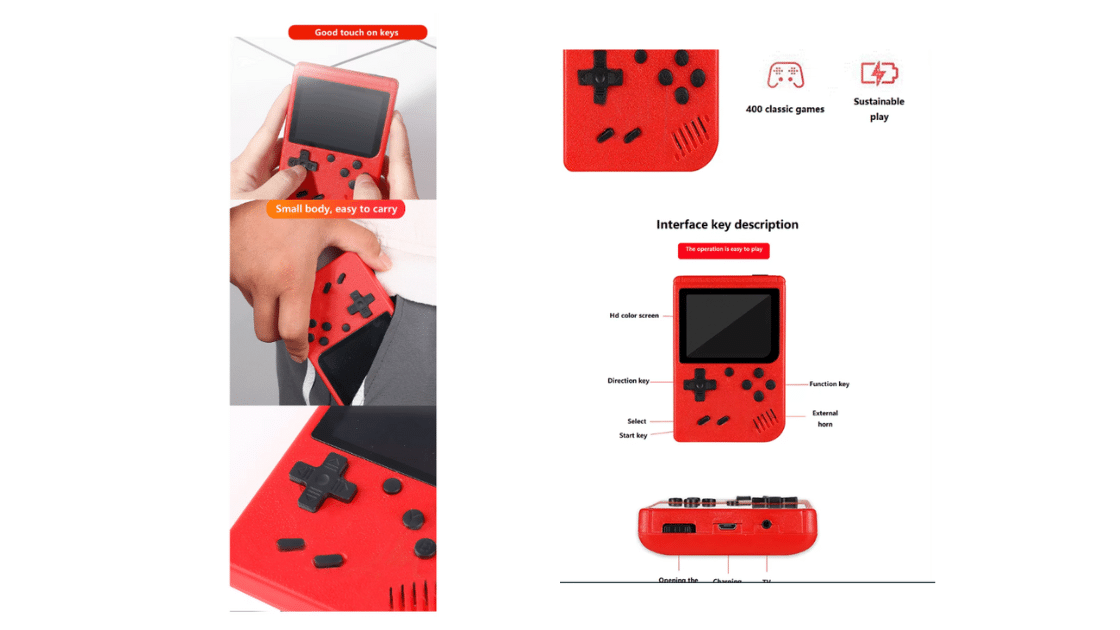
La Redoute
Historically rooted in textiles and home décor, La Redoute has gradually integrated enriched content blocks:
- Lookbooks or lifestyle visuals,
- Presentations by ranges or collections,
- Highlights of brand values (ethics, European manufacturing…).
Here, emotional content and visual inspiration take precedence over pure technical sheets.
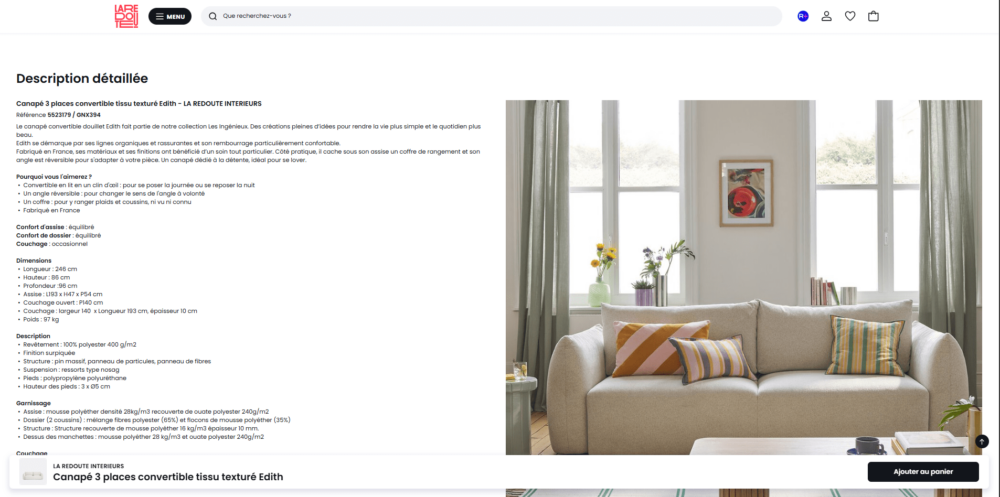
Fnac/Darty
For electronics and household appliances brands, Fnac/Darty offers:
- Detailed sheets with technical visuals + usage guides,
- Integrated videos (notably on key products),
- Highlight sections for labels (warranty, innovation).
The aim here is reassurance and education for a more considered purchase.
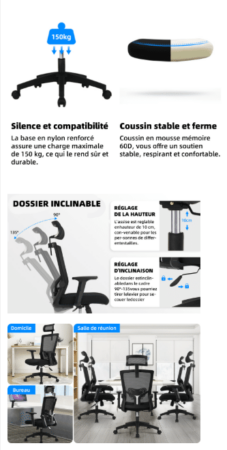
Carrefour
Carrefour’s marketplace is evolving rapidly, with integrations of:
- Dedicated brand pages,
- Enriched visuals and complete descriptions,
- Seasonal highlights (Christmas, back-to-school, Black Friday).
Carrefour’s experience relies on the trust of a major retailer and clear presentation of the offer.
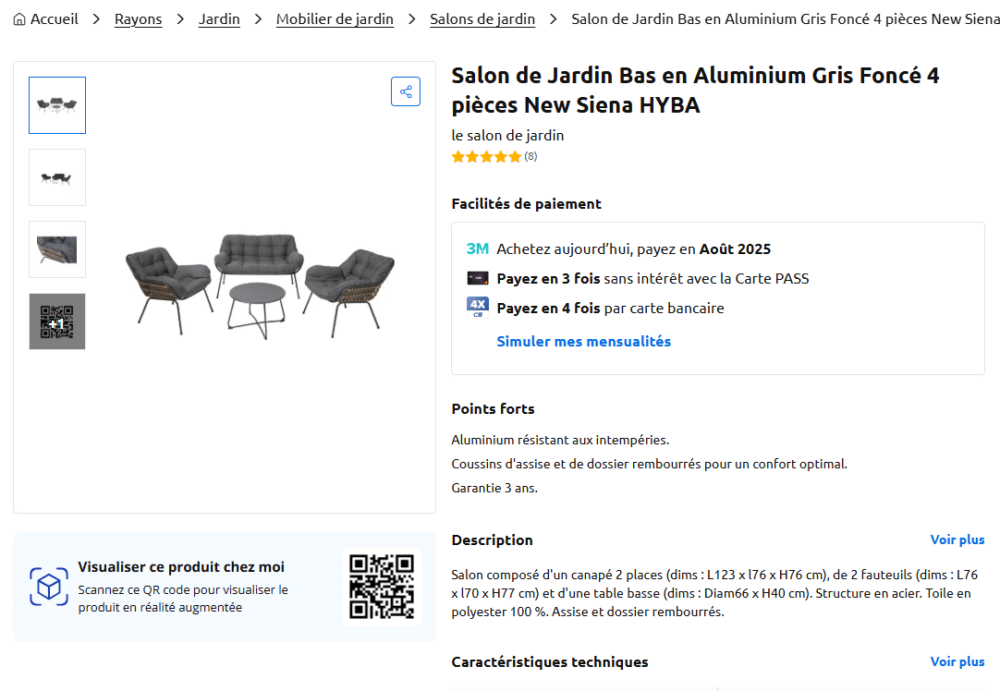
Towards a new e-commerce standard: immersion, emotion, conversion
Beyond a trend, enriched content has become an implicit consumer expectation:
- 60% of internet users expect dynamic and interactive visuals before making their purchase decision.
- Enriched pages significantly reduce product returns, as they address doubts upfront.
- They anchor the brand in a stronger imagination beyond the simple product.
Enriched content: a strategic lever for brands
In a context of advertising saturation and fierce competition, enriched content offers several advantages:
- Control of brand messaging on every sales channel
- Reduction of product returns thanks to better product understanding
- Strengthening omnichannel coherence
- Optimisation of internal marketplace SEO
And with the arrival of generative AI, some marketplaces like Amazon or Google Shopping with its AI Overviews could soon offer automatically generated enriched content.
Best practices for effective A+ Content
To maximise the impact of your A+ pages, here are some recommendations from the official ebook:
- Use high-quality lifestyle visuals → up to +86% conversion according to the official A+ Content guide.
- Structure your narrative: start with product benefits, develop brand story, finish with a strong visual CTA.
- Ensure mobile compatibility: essential in the m-commerce era.
- Test different modules according to your goals: comparison, storytelling, inspiration.
- Avoid common mistakes: overload of technical info, low-quality images, non-responsive content.
Three strategies to integrate A+ Content depending on your resources
Amazon recommends three approaches depending on catalogue size and available resources:
- Individual A+ pages for each product
- + Highly personalised, ideal for technical products
- – Time- and resource-consuming
- Generic A+ page for the entire catalogue
- + Easy to implement
- – Less engaging for customers
- Hybrid approach
- + Focus on high-potential pages (margins, traffic, seasonality)
- – Requires strategic selection beforehand
Conclusion: Amazon laid the groundwork, others follow
What was once called “A+ Content” is becoming a basic requirement in brands’ marketplace strategies. While Amazon initiated this movement, other platforms have clearly understood the benefit of giving sellers more flexibility to stage their offer.
In this battle to capture attention and convince in a few seconds, enriched content has become a strategic playground. It is now up to brands to seize it intelligently.
Your e-commerce library
Sign up for our newsletter
By submitting this form you authorize Lengow to process your data for the purpose of sending you Lengow newsletters . You have the right to access, rectify and delete this data, to oppose its processing, to limit its use, to render it portable and to define the guidelines relating to its fate in the event of death. You can exercise these rights at any time by writing to dpo@lengow.com

Trending Posts
Marketing channels
ChatGPT Ads and advertising on GenAI Search Engines: what you need to know
Advertising on generative AI-based search engines (GenAI) marks a new era in digital marketing. After two decades dominated by traditional…
22/05/25
6'
Marketing channels
Reddit and Social Commerce: When Users Take Back Control
Before buying anything, we compare. We hesitate. And more and more often, we end up typing the product name followed…
30/06/25
8'
Marketing channels
How to Sell on TikTok in 2025: The Ultimate Guide to Success
To sell or not to sell on TikTok? That remains a question many brands ask themselves. But here’s what you…
03/02/25
7'
E-commerce Trends
E-Commerce 2025: The New Rules of Digital Retail
What’s going on in e-commerce? A lot. If 2024 was the year brands got comfortable with marketplaces, AI tools, and…
11/07/25
8'
Marketing channels
Omnichannel Strategy: The Best Examples of Successful Brands
Consumers interact with brands through multiple channels, including online, in-store, and mobile apps. More than 90% of consumers expect a…
04/04/25
5'




